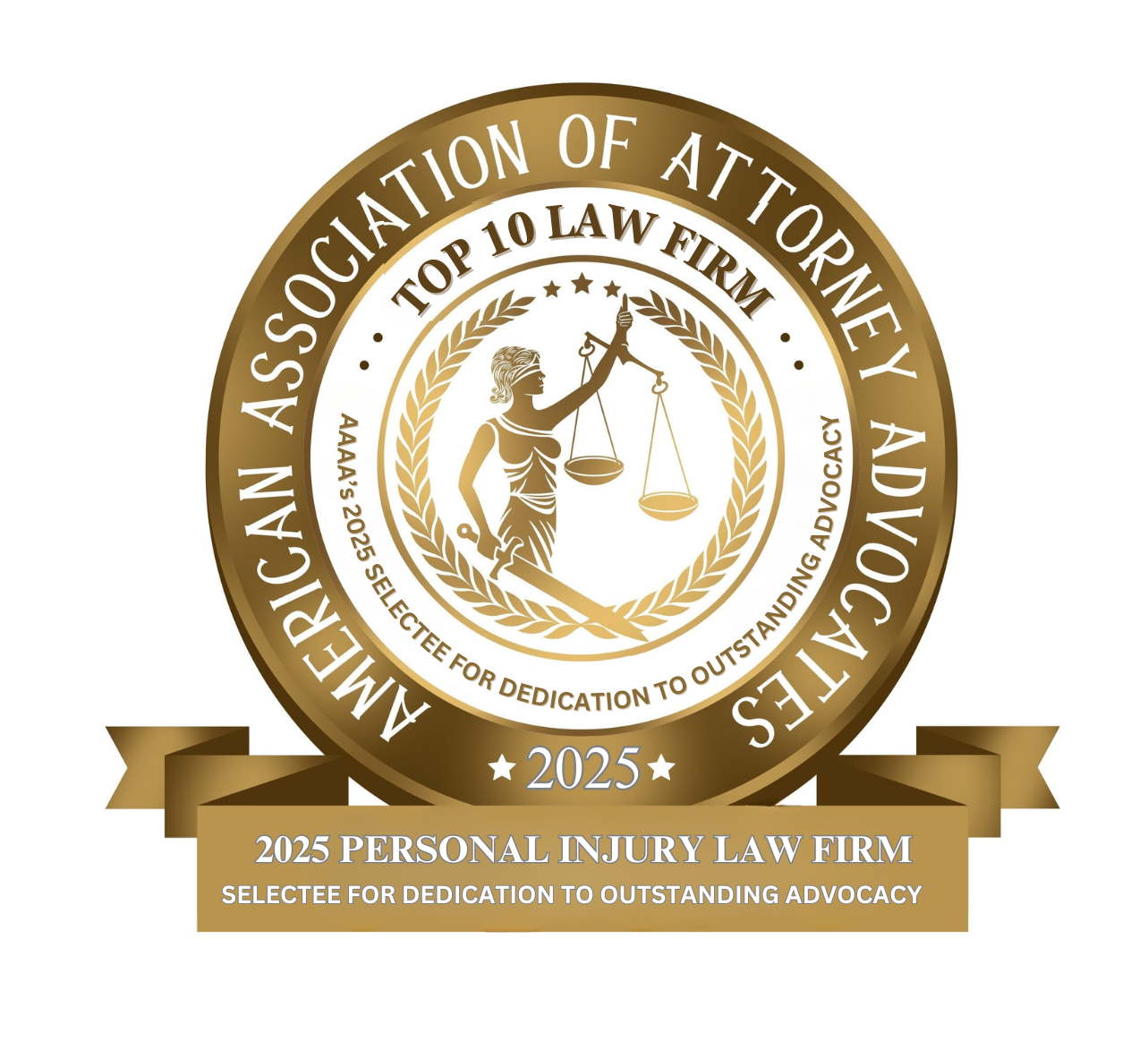Illinois Dashboard Knee Injury Lawyers
Attorneys for Crash Victims Who Hit Their Knee on the Dashboard
A dashboard knee injury is a specific pattern of trauma that occurs when the flexed knee is driven backward by force, most commonly when the knee strikes the dashboard in a car accident. The classic result is injury to the posterior structures of the knee: posterior cruciate ligament (PCL) tears, posterior tibial plateau fractures, patellar (kneecap) fractures, and the bruising, cartilage damage, or meniscal tears that often accompany those injuries. These injuries can be painful, disabling, and sometimes subtle on initial examination. They may require months of rehabilitation or, in severe cases, surgery and long-term lifestyle adjustments.

At John J. Malm & Associates, our attorneys have built a reputation throughout Illinois for handling complex car accident injuries with skill, precision, and compassion. For decades, our firm has represented crash victims facing serious orthopedic injuries, including debilitating dashboard knee injuries, that impact mobility, employment, and long-term quality of life. We work closely with medical experts, investigators, and accident reconstruction specialists to uncover what happened, identify all responsible parties, and fight for the full compensation our clients deserve. When a violent frontal collision leaves your knee damaged, your life disrupted, and your future uncertain, our team of dedicated Illinois car accident attorneys is prepared to protect your rights and guide you through every step of the legal process.
“Dashboard knee injuries often look straightforward at first glance, but they carry a real risk of long-term disability and hidden damage. If you were injured in a crash, preserve every medical record and seek an experienced attorney who knows how to gather evidence, work with orthopedic experts, and protect your rights while you focus on healing.” — John J. Malm, Naperville injury lawyer
How Dashboard Knee Injuries Happen
In a frontal crash, the occupant’s body continues moving forward while the vehicle decelerates. If the knee is bent (for example, a driver with feet on the pedals or a front-seat passenger), the tibia can be driven posteriorly (backward) when the front of the knee impacts the lower dashboard or instrument panel. The sudden posterior translation concentrates force on the PCL and posterior tibial plateau, and it can crush the patella or cause the femur/tibia to collide in ways that damage cartilage, menisci, and bone. High-energy impacts and intrusion of the vehicle structure increase the severity of injuries. Modern restraint systems reduce many harms, but lower-extremity injuries remain common in head-on crashes and frontal impacts.
Types of Injuries Caused by Dashboard Impact
- Posterior cruciate ligament (PCL) tears or sprains: The PCL is the ligament most classically associated with dashboard injuries. A direct posterior force on the tibia stretches or tears the PCL.
- Tibial plateau fractures (posterior or central): Compressive forces can fracture the weight-bearing surface of the tibia near the knee joint, often producing joint depression or split fractures.
- Patella fractures and comminution: Direct impact against the dashboard can fracture the kneecap, sometimes into multiple fragments, and occasionally require open reduction and internal fixation.
- Meniscal tears and chondral (cartilage) injury: Impact and abnormal joint loading commonly damage the menisci and articular cartilage, setting the stage for later arthritis.
- Contusions, lacerations, and soft-tissue injury: Even without major fractures, the soft tissues around the knee can be bruised or lacerated by concentrated force.
How Common are Dashboard Knee Injuries?
Estimating exact incidence is complicated because studies use different definitions and data sources. Research shows that dashboard knee injuries are not rare, and while many are minor, a meaningful minority are severe and require surgery or prolonged rehabilitation.
- A focused clinical study from 1977 described the instrument panel (dashboard) as a frequent source of knee injuries in real crashes, noting dozens of knee contacts and a range of severities. Evidence that dashboard impacts are a longstanding, recognizable mechanism.
- Large crash database analyses (NASS/CDS) and epidemiologic reviews have consistently shown the knee/leg region to be a meaningful portion of crash injuries. Historic NASS work estimated knee-region injuries around ~10% of recorded crash injuries, though that includes many low-severity cases.
- Biomechanical and CIREN analyses show that knee bolsters and knee airbags can change injury patterns (reducing some femur fractures and entrapment while producing other lower-extremity stresses), but lower-extremity injury remains an issue despite advances in restraint systems. Modern safety features reduce mortality and head/chest injuries far more effectively than they eliminate all knee trauma.
- Clinical and orthopedic sources emphasize that PCL injuries commonly result from a direct posterior force to the proximal tibia, the defining mechanism of the “dashboard injury”, and that MRI is often necessary to detect concurrent ligament and meniscal damage that can change management.
Who is at Higher Risk of a Dashboard Knee Injury?
- Occupants in frontal collisions: Frontal and head-on crashes are the primary setting for dashboard impacts.
- Drivers and passengers with knees flexed on pedals: Foot placement and seating position matter: bracing the foot or sitting very close to the dash increases the chance the knee will strike the dash.
- Older vehicles or vehicles with high intrusion: Structural intrusion into the occupant compartment or older dashboards without a modern energy-absorbing design can increase forces to the knee.
- High-speed impacts and stopped vehicles with small crush space: Greater crash energy raises the chance of fractures and multi-ligament damage.
Signs and Symptoms of a Dashboard Knee Injury
- Immediate knee pain and swelling (often within hours).
- Difficulty bearing weight or instability when standing.
- A feeling that the shin slides backward beneath the thigh (posterior instability).
- Tenderness over the kneecap, tibial plateau, or joint line.
- Inability to straighten the knee fully or range-of-motion loss.
- Numbness, tingling, or skin breaks from lacerations.
Symptoms may be masked right after an accident by adrenaline, other injuries, or initial imaging that misses soft-tissue damage, so persistent pain or swelling should prompt further evaluation.
How Dashboard Knee Injuries are Diagnosed
To diagnose a dashboard knee injury, doctors will typically do the following:
- Physical exam: Tests such as the posterior drawer, dial, and sag tests evaluate PCL and posterior-corner stability.
- X-rays (radiographs): Detect fractures of the patella, tibial plateau, or joint alignment problems.
- CT scan: Helpful for detailed fracture mapping before planning surgery.
- MRI: The most sensitive test for detecting ligament, meniscal, and cartilage injuries. Often obtained when instability or persistent symptoms suggest soft-tissue damage.
- Serial exams and imaging: Some injuries evolve or are revealed with swelling and may require repeat imaging.
Treatment Options
Treatment depends on injury type and severity:
- Conservative care (non-operative): rest, ice, compression, elevation (RICE), immobilization (brace), physical therapy to restore range of motion and strength. Appropriate for isolated low-grade ligament sprains and uncomplicated fractures.
- Surgical repair or reconstruction: indicated for displaced fractures (patella, tibial plateau) or multi-ligament instability. PCL reconstructions, open reduction and internal fixation (ORIF) of patella fractures, and plateau fixation are common procedures after dashboard injuries.
- Rehabilitation: progressive therapy to regain motion, strengthen quadriceps and hamstrings, and re-train functional gait. Recovery timelines vary from weeks for minor injuries to many months after surgery.
- Long-term monitoring: cartilage damage and meniscal tears increase the risk of post-traumatic osteoarthritis; patients may need long-term follow-up and lifestyle adjustments.
Potential Complications
- Persistent instability (feeling the knee “give out”).
- Chronic pain and stiffness.
- Post-traumatic osteoarthritis decades after the injury.
- Surgical complications: infection, stiffness, hardware irritation, or the need for further procedures.
- Lost work time and long-term disability in severe cases.
What To Do After a Crash If You Suspect a Dashboard Knee Injury
- Get medical attention promptly: Even if the knee seems “just bruised,” early evaluation reduces the risk of missed ligament or cartilage injury.
- Tell providers how the injury happened: Describing a dashboard impact focuses clinicians on PCL and posterior-corner evaluation.
- Keep records: Retain emergency reports, imaging, operative notes, and therapy records. They matter for medical care and any legal claim.
- Avoid premature return to high-demand activity: Early weight-bearing or twisting sports may worsen instability or cartilage damage.
- Ask about getting an MRI: If your exam or X-rays don’t explain ongoing instability/pain, MRIs often find injuries that change treatment.
When to Consider Specialist Care and Second Opinions
If your pain or instability persists beyond the expected recovery window, or if an initial provider recommends watchful waiting while you remain symptomatic, seek an orthopedic sports-medicine or trauma specialist for a second opinion. Specialists can interpret advanced imaging, advise on the tradeoffs between nonoperative care and reconstruction, and manage complex rehabilitation programs.
Frequently Asked Questions about Dashboard Knee Injuries
Q: Is a dashboard knee injury the same as a PCL tear?
A: Not always, but the term “dashboard injury” is commonly used to describe the classic mechanism that causes PCL sprains or tears. It can also include fractures (patella, tibial plateau) and other soft-tissue damage. Diagnosis requires clinical testing and often an MRI.
Q: Can a dashboard knee injury be missed on initial X-rays?
A: Yes. X-rays detect fractures but can miss ligament, meniscal, or cartilage injuries. If pain, swelling, or instability persists, advanced imaging (MRI) is usually indicated.
Q: Do knee airbags prevent dashboard knee injuries?
A: Knee airbags and knee bolsters alter how forces reach the lower extremity and can reduce certain fracture patterns, but they do not eliminate all knee injuries. Occupant position, crash energy, and intrusion still affect outcomes.
Q: How long does recovery take?
A: Minor sprains may recover in weeks with therapy; complex fractures or ligament reconstructions can require many months (often 6–12 months) for maximal recovery. Each case depends on injury severity and the patient’s baseline health.
Q: When should I talk to a lawyer?
A: If your injury is severe, you have unreimbursed medical bills, lost wages, disputed liability, or suspect a vehicle defect, consult an attorney experienced in crash injury and product liability law early and before settling with insurers. Documentation and timely investigation are critical.
Contact the 5-Star Rated Illinois Knee Injury Lawyers at John J. Malm & Associates
Dashboard knee injuries are common in frontal collisions and range from minor sprains to complex fractures and ligament tears that change lives. Early diagnosis, appropriate imaging, and timely orthopedic care make a material difference in recovery and long-term function. If you or a loved one suffered a knee injury in a car crash, preserve your medical records and accident documentation and consult both medical and legal professionals who understand crash biomechanics and the long-term consequences of knee trauma.
If you’re facing mounting medical bills, lost wages, disputed insurance claims, or uncertainty about who is responsible, contact John J. Malm & Associates for a free consultation. Our top-notch Illinois car accident attorneys work with orthopedic experts and crash investigators to document injury causation, identify all potential sources of recovery (at-fault drivers, insurers, or defective vehicle components), and fight to maximize compensation so you can focus on healing. Call our office today. Let us review your case and explain your rights and options.















